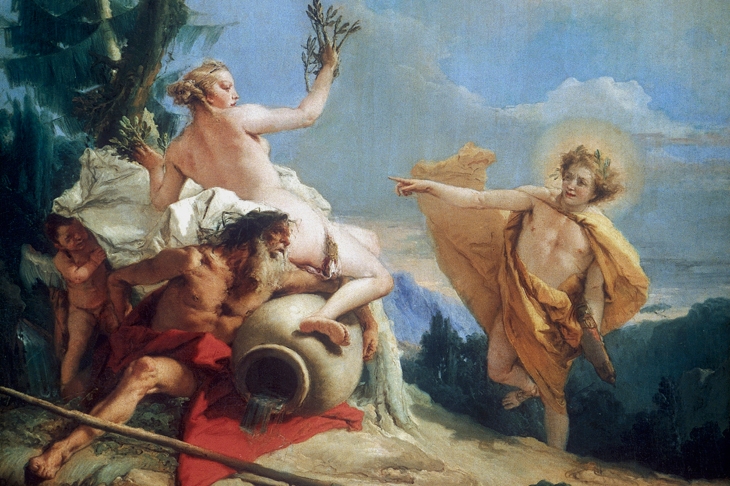‘My spirit moves me to speak of forms changed into new bodies,’ proclaimed Ovid at the beginning of the Metamorphoses: a glorious compendium of classical mythology stretching from the creation of the universe to the Emperor Augustus.
Metamorphica is a collection of 53 versions of classical myths as told by Ovid, Homer and the Greek tragedians (Mason’s first novel was The Lost Books of the Odyssey). They are inspired less by Ovid’s content than by his technique of ‘moving lightly through the ancient sources, taking up what he liked and reinventing it’. Metamorphica takes the bare premise of an ancient myth as the starting point from which to create a modern one with a wholly different focus.
Midas, for example, no longer turns everything he touches to gold. Instead, he melts down the contents of his treasury and invents money. Daedalus is promoted from a clever engineer to a ‘pure mathematician’, and loses himself in the contemplation of an irrational number whose digits, like Borges’s infinite library, encode the text of all human thought.
Unlike Ovid, Mason orders his myths according to an imaginary zodiac, whose stars represent stories connected by the god governing their ‘septant’ of the sky. This conceit, although superficially pleasing, does not contribute much to the novel’s meaning.
Mason is less interested in physical transformation than in a metamorphosis of identity or a story-within-a-story. Rather than turning into a laurel, Daphne tries to gain personal immortality from Apollo in exchange for her virginity, but fails; instead, her essence lives on in the endless succession of ‘ordinarily pretty girls’ whom he pursues.
The best tales, such as ‘Tiresias’, linger in the mind. Drawing on a remark in the Odyssey that Tiresias ‘alone had understanding’ in the Underworld, Mason depicts him walking through a windswept desert, whose Marvellian ‘name is eternity’, to reach the city of Mnemosyne (‘memory’), where ‘a good phrase, or the intuition for a theorem’ can gain an abstract immortality.
Unfortunately, several of the myths disappoint in the execution, because they are so briefly sketched. Thus in ‘Ideograph and Symbolic’, Mason weaves a myth about language around the story of Cadmus, who becomes obsessed with writing, and is told by one of his own ideographs that ‘the world is… a coarse and empty calculus of symbols’. This conclusion, though intriguing, is too weighty for the slight narrative in which it is contained. The prose style, although smooth and professional, suffers from the repetition of literary verbs to the point of cliché: again and again, arrows are ‘nocked’, dresses ‘pool’ at their wearers’ feet, dogs ‘bell’, and heroes ‘intuit’ abstract nouns.
For all Mason’s ingenuity, I suspect Ovid will have the last laugh.






Comments